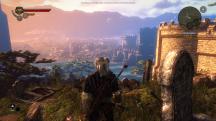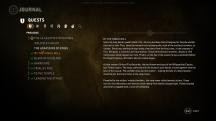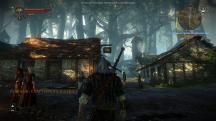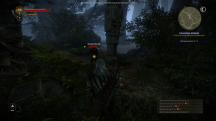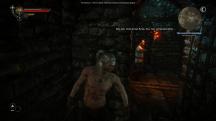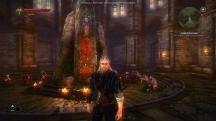Hands-On With The Witcher 2
The Witcher was one of those rare projects: an unexpected gem from a studio developing their first full title, who set about achieving their ambitions with professional style. In a world full of sequels and conservative focus-group-centred, multiplatform design, The Witcher successfully blended a relatively unknown IP with huge potential, artistic ideals and sensible limitations. Of course, having been successful, it's now nearly time for the obligatory sequel to meet with gamers.
We were afforded the opportunity to play preview code that included the prelude and first chapter. I've spent around a dozen hours with it - enough time to get a good feel but not enough to draw any comprehensive conclusions about the full game. Indeed, CD Projekt's goal of long-term consequences to the in-game choices makes it inherently difficult to judge from a limited slice, so bear that in mind.
In a nutshell? If you liked The Witcher, you should like The Witcher 2; everything I've seen points to a grand action/RPG that all fans of the genre should consider playing. There are certainly some changes that not everyone will embrace and others may feel the game hasn't evolved enough but The Witcher 2 takes the same basic formula and intent, polishing it further. It's clear CD Projekt Red has learned from the first game and used that knowledge to tweak and improve, without changing the real foundations. With that in mind, I'm going to focus on the gameplay and changes instead of re-hashing what you probably already know. No spoilers, other than a very general sense of the prelude/tutorial.
The basic presentation is much the same - The Witcher 2 is a 3rd-person action/RPG controlled from an over-shoulder view using typical WASD + mouselook conventions although the alternative, overhead point-and-click system is gone. The style is clearly influenced by (earlier) BioWare, with a stronger focus on story and characters than freeform exploration.
The game opens with a spectacular siege, as the King's men wrestle to regain control of a rebel castle. This Prelude chapter is entirely linear and technically serves as a tutorial, but it's one of the most exciting opening sequences I can recall. CDPR has cleverly constructed levels surrounded by sweeping fields of battle with (presumably) thousands of men but framed the action and camera so it doesn't feel unnatural to only see a dozen or so characters on screen at once. The combat and focus is personal, but it feels epic with the castle a stunning backdrop for the action.
Story and characters are thrown at the player without much consideration for whether you've played (or remember) the first game. In some ways, it's not so much the famous nudity (which is there) that marks The Witcher 2 as a mature game as the way the fast-moving script expects you to keep up. The journal is written as a true journal - not just a quest log - and you'll need to read it regularly to keep up.
After the Prelude, you arrive at a seaside village and the pace changes, giving the player a chance to explore and undertake sidequests as you please. Similar to the first game, the village serves as a central hub to trade and collect quests, with the surrounding forest full of monsters, bandits, caves and the like.
Structurally, the game is similar, with chapters and discrete locations, rather than a single continuous world. I didn't get the chance to travel to a new area (other than the transition from Prelude to Chapter 1), but it seems the game will offer a semi-linear progression with changes to new major locations as the story unfolds. Based on the village of Flotsam and the surrounding forest, swamp and shores, the areas are larger than the original game. Throughout the forest are paths that intertwine that you need to broadly stick to but they've done a much better job of disguising the restrictions than the first game: obstacles and boundaries exist but I didn't see the sort of "small garden fence" barriers that frustrated some gamers in the original game. In addition, while you can't actively jump over objects, the team has implemented interactive "hotspots" where Geralt can climb or drop down. Together with the better level design, this makes it feel more natural and less enclosed. This change means the team has been able to create more interesting terrain with a sense of height, allowing Geralt to climb down over rocks to reach a river below, for example.
The living world is still there, with NPCs going about their business, working and chatting. They sometimes remark as Geralt passes ("why does he need two swords...does he lose them?"), although this can get repetitive. All in all, The Witcher 2 offers a higher degree of verisimilitude through incremental improvement.
It's impossible to judge the story with what we've seen but, as mentioned, the opening is certainly exciting. Within the limitations of this preview access, the dialogue seems well written and I wanted to uncover more of the story. One change is the ever-so-slight influence of other games with the occasional option to choose an "action" in dialogue, such as breaking off the conversation to punch someone in the face, and the occasional timed dialogue response.
Character development was arguably one of the weaker RPG elements of The Witcher and the sequel has taken steps to address that. CDPR has to walk a line: Geralt is a Witcher - a swordsman - and the character development needs to be consistent with Sapkowski's lore. This time, the skills are divided into four separate "webs" - Witcher, Swordsmanship, Alchemy and Magic - with a little more emphasis on active abilities. For example, I added "Dagger Throwing" early on for some ranged capacity. It looks promising but it's hard to tell at this stage exactly how much different choices will change the gameplay.
As you'd expect, many of the abilities relate to combat, which is where the greatest changes have been applied. The previous timing-based "chains" have been replaced by a more active system. Left-click delivers a fast blow, while a right-click delivers a slower, heavier blow. You can also actively block, although you might still take some damage, and skills add the ability to riposte and counter-attack. The choice of silver or steel sword plus quick or heavy blows still brings a sense of tactics, like the first game, but against intelligent enemies the system really shines. Timing is still important but its more organic, finding an opening in your opponent's guard and taking advantage when they are stunned or off-balance.
This is particularly true against heavily armoured knights who wield shields - I rather enjoyed circling round and using a series of quick blows to entice the knight into striking, then timing my own heavy blow to break through. In addition to blocking, you can roll out of the way with a double-tap. Sometimes you'll find mixed group encounters and I found these hectic and quite difficult; it did look a little silly rolling all over the place to avoid being struck from all directions but it seemed the most effective tactic.
Another new addition is finishing moves if an opponent is stunned or incapacitated, such as when caught by a Sign. The AI appears to offer some challenge and variation - I was particularly impressed when a common monster applied some tactics, rolling to avoid my blows - and then fled when close to death. Alchemy, bombs and traps are present but I didn't have much opportunity to experiment with them.
Stealth is a new option, although the game controls the opportunities: at certain scripted locations, you are given the choice to enter Stealth mode. While creeping around, Geralt can use a Sign to blow out torches and silent takedowns can be executed by successfully reaching an enemy from the rear without detection. I found one stealth sequence quite easy and, in another, I was repeatedly detected, so this might need more fine-tuning. Still, it's an interesting addition.
One potentially controversial aspect is the Quick Time Events. There are a variety of mini-games such as boxing, arm-wrestling, dice and more. For example, the boxing is reminiscent of Heavy Rain - you'll have to hit one of the WASD keys as a sequence flashes up. The choreographed animation is impressive but I'd prefer a direct control system. Arm-wrestling was dull and I didn't try dice. Most of these are optional but occasionally, they are part of a story sequences. For me, these aren't a successful addition but they also don't do much harm.
So, on to the most important aspect: how well are the choices and consequences implemented? I can only provide a limited view but I did observe a number of choices and optional approaches. Early in the Prelude a soldier asked for advice - during a pitched battle he added support and later explained my advice helped him survive that far. Flotsam has provided a raft of small choices and these build to a climax. You can choose to sabotage a weapon, using prostitutes to draw a guard away and later create a distraction with an arm-wrestle. There's an opportunity to sneak into a compound and collect information and one of the major encounters can be completed alone or with assistance - all of these have some impact later on.
From a performance and stability perspective, things looks promising. I played the preview code on a laptop and the performance was passable on High and very good on Medium - I'd say any reasonable gaming rig should be acceptable and for those with high-end hardware, the game looks incredible. At any setting, the fantastic art direction still shines through (note: the screenshots in this article were taken on Medium). Transitions into buildings took around three seconds and quick-saves were near instantaneous. I experienced no crashes, though I did note some minor pathing issues and Geralt got stuck in a doorway a couple of times. The movement speed is quite fast (good for traversing distances) but indoors, Geralt occasionally felt like a pinball bouncing off obstacles. All of these are relatively minor things that will be hopefully addressed in the release code.
I was honestly disappointed when the time-limit on the preview code expired - there's little doubt The Witcher 2 will be one of the biggest RPGs of the year and I thoroughly enjoyed my time with it. The combat is improved, the writing is better, there appears to be more choices - and the brooding Eastern European atmosphere is intoxicating. I can't wait to for the release.
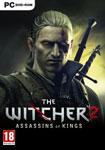
Information about
The Witcher 2Developer: CD Projekt RED
SP/MP: Single-player
Setting: Fantasy
Genre: RPG
Combat: Real-time
Play-time: 40-60 hours
Voice-acting: Full
Regions & platforms
World
· Platform: PC
· Released: 2011-05-17
· Publisher: Namco Bandai
More information


